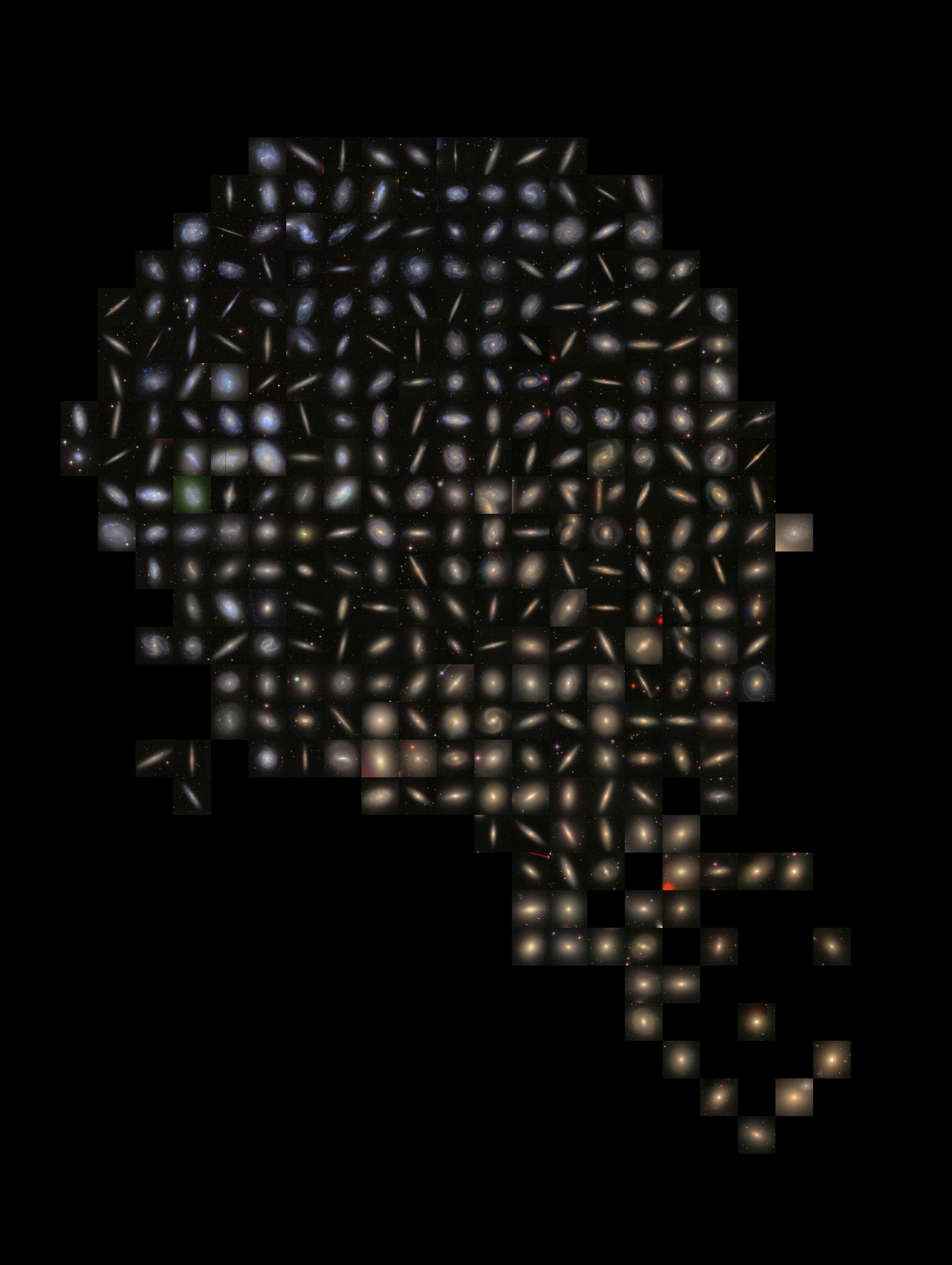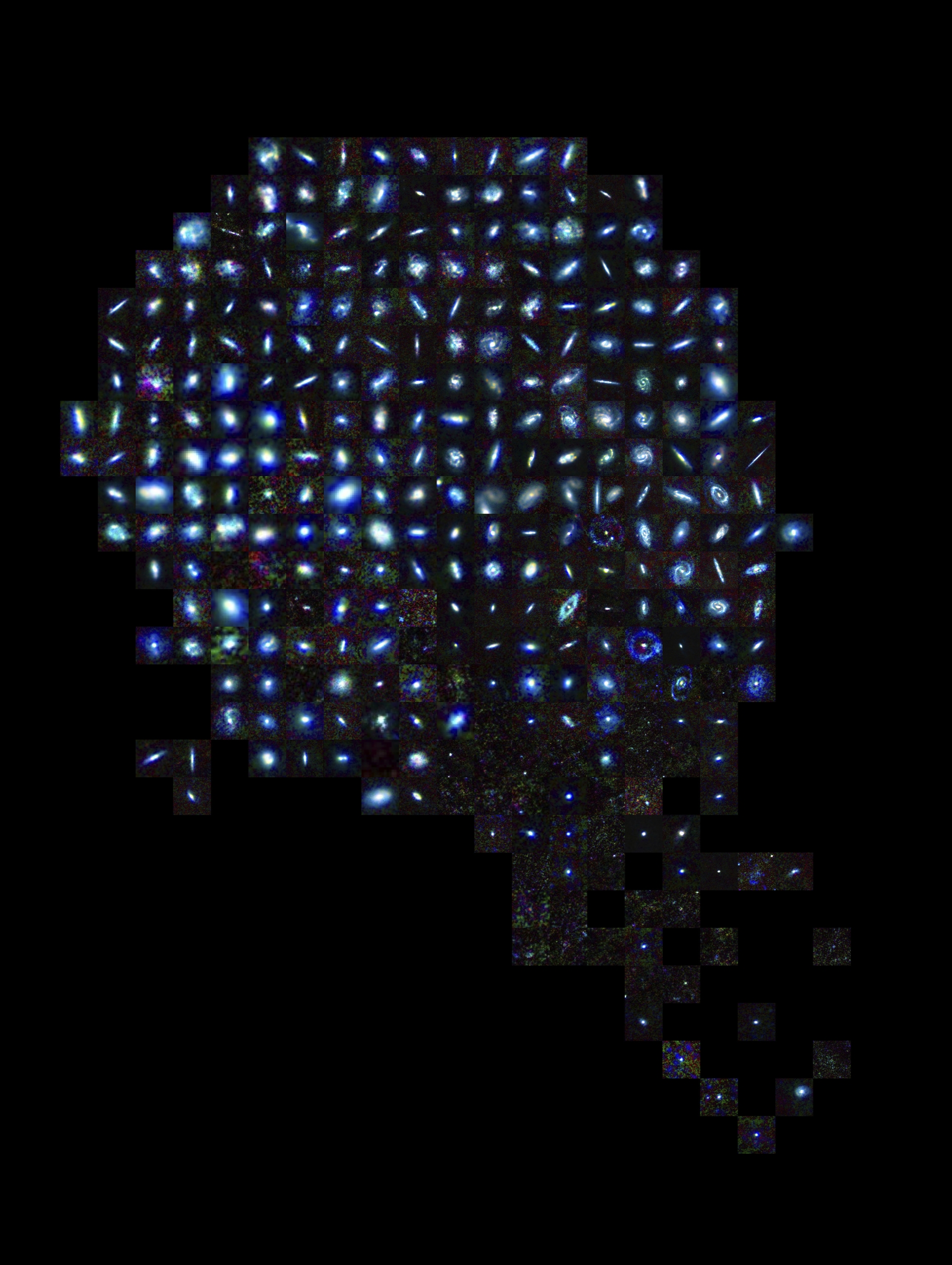- GALAXIES
- INFRARED WORLD
- INTERACTING GALAXIES
- MILKY WAY
- STAR BIRTH
- STAR DEATH
- GALAXIES
- INFRARED WORLD
- INTERACTING GALAXIES
- MILKY WAY
- STAR BIRTH
- STAR DEATH
Galaxies
Zoo of Galaxies


Visible:
Default View
Far Infrared:
LESS
MORE
Zoo of Galaxies
Galaxies come in all shapes and sizes. The differences between them hints at their formation, and at the assembly of the universe.
Visible:
To Hubble's visible-light-detecting cameras, galaxies look like a continuum of shapes and sizes from grand spirals to indistinct ellipticals.
Far Infrared:
Viewed by the European Space Agency's Herschel Space Observatory, only certain galaxies have dense cores, which can be seen only in the infrared. This sequence of galaxies would look very different under Webb's powerful infrared vision, which would bridge the gap between these two images.
CREDITS:
Visible: Sloan Digital Sky Survey/L. Cortese, Swinburne University. Far-infrared: ESA/Herschel/HRS-SAG2 and HeViCS Key Programmes/L. Cortese, Swinburne University. Web page design credit M. Merin (Pludo) and B. Merin.